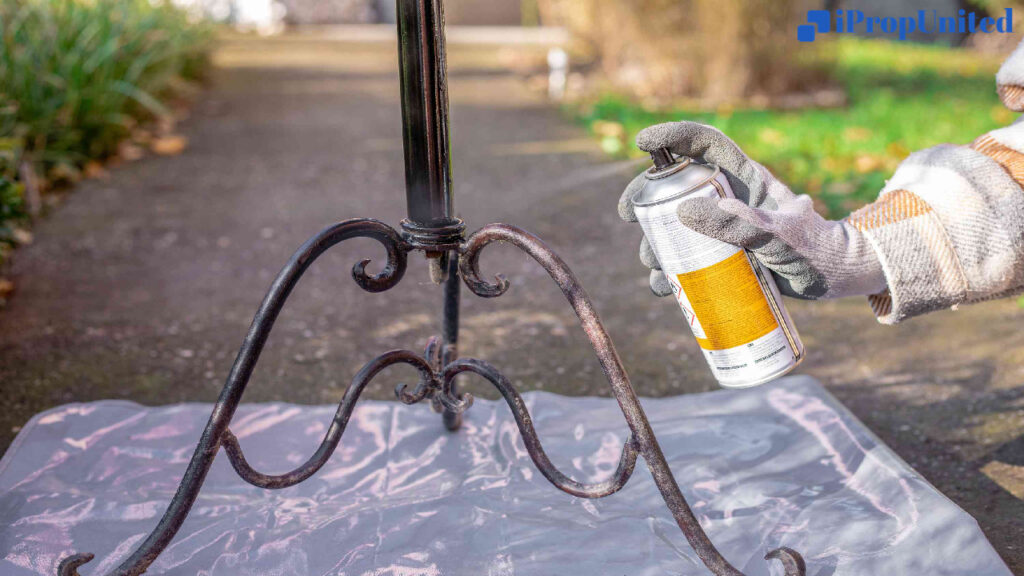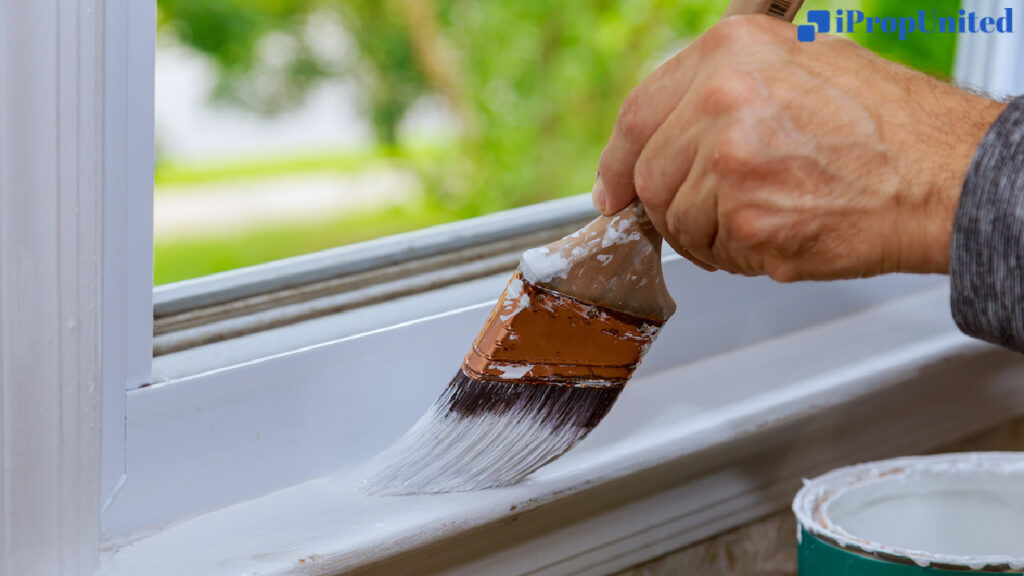Enamel paint is a durable and protective finish that creates a hard shell on surfaces. Thanks to its oily base, it produces a high gloss when applied. It’s easy to apply, and once dry, the surface becomes highly washable and resistant to wear and tear. However, its only downside is its unpleasant odor due to the chemicals in its composition.

This type of paint is available in both liquid and spray form and is not only limited to house painting but also finds vast applications in the industrial sector. Enamel paint can withstand harsh temperatures and abrasions, making it a popular choice for exterior walls. Waterproof and sunproof variants of enamel paint are also available, which easily protect exterior walls from weather damage.
What is Enamel Paint?
Enamel paint is a slow-drying painting solution that consists of white lead, zinc white, resins, and other petroleum products. It has two parts: a base coat and a colorant. The chemical bond between both of these components results in a flawless finish over the surface. Enamel paint is best known for its high coverage and color retention properties. It usually comes in two bases: oil and water.
Keep reading to know more about Enamel paint.
Pros and cons of Enamel paint
Enamel paint is a popular option for painting solutions due to its glossy finish and high resistance against chipping. However, it is important to consider the specific needs of your house and walls before finalizing this paint. To help you make an informed decision, here are the pros and cons associated with enamel paint:
Pros of enamel paint:
- Enamel paint is easy to apply and provides a smooth texture to the surface due to its oil base.
- This paint is highly resistant to water, dust, stains, and other external factors. As a result, it is a durable option for exterior walls, bathrooms, and kitchens that are more prone to water damage.
- Enamel paint is easily washable. You can clean the surface with a damp sponge or remove dust with a dry cloth.
Cons of enamel paint:
- Enamel paint is chemically engineered and contains various chemicals, such as urethane, that are highly volatile.
- The paint has an unpleasant scent that can be hazardous, especially for those who are allergic to it. The oil-based enamel paint often emits harmful fumes.
- Enamel paint takes a long time to dry. It can take 12 to 48 hours for this type of paint to completely dry.
Enamel paint price
Enamel paint offers a high radiance and durability. It is highly resistant to any sort of stain. The price of the Enamel paint is directly proportional to the high utility it offers. Here is the price list of the popular Enamel paint types:
- Furniture Enamel paint: Rs 135/ltr
- High gloss Enamel paint: Rs 175/ltr
- Solvent-based Enamel paint: Rs 175/ltr
- Water-based Enamel paint: Rs 310/ltr
- Luxury Enamel paint: Rs 165/ltr
- Satin Enamel paint: Rs 4,324/ltr
- Fast and quick drying paint: Rs 200/ltr
- Fast-drying synthetic paint: Rs 255/ltr
- Industrial Enamel paint: Rs 340/ltr
- Aqua semi-gloss Enamel paint: Rs 150/ltr
Best Enamel paint brands with prices
When choosing the best enamel paint, it is advisable to compare price lists offered by different brands. Here are the enamel paint prices from some popular brands:
|
Brand name |
Price per ltr |
|
Nerolac |
Rs 230 to 450 |
|
Dulux |
Rs 300 to 850 |
|
Nippon Paint |
Rs 380 to 750 |
|
Asian Paint |
Rs 250 to 1350 |
|
Indigo Paints |
Rs 285 to 600 |
|
Berger |
Rs 170 to 600 |
|
Shalimar |
Rs 220 to 420 |
Compatible materials with enamel paints
If you’re wondering which materials are compatible with enamel paints, you’ll be pleased to know that enamel paint works well with a variety of surfaces, including those that are smooth or absorbent. The list of compatible materials is extensive and includes:
- Glass
- Aluminum
- Galvanized steel
- Stainless steel
- Caulking
- Wood
- Plastic
- Porcelain
- Ceramic

Enamel paint is a great choice for metal surfaces if you’re looking for a durable finish that is resistant to weathering and corrosion. When applied correctly, enamel paint also helps to prevent fading and chipping of metal surfaces, making it ideal for outdoor applications or items frequently exposed to moisture.

If you’re looking to finish wooden surfaces, enamel paint can also improve their appearance and extend their lifespan. Its resistance to moisture and UV damage, coupled with protection against mold, mildew, scratches, dents, warping, and peeling, ensures the longevity of the wooden surface.
It’s important to choose the right type of enamel paint for the surface you’re working with. Homeowners can choose between oil-based and water-based varieties, each tailored for specific purposes to best suit their intended surface. Also, when it comes to metal finishes, glossier paints provide better protection than matte variants regarding weather resistance, though they may be more susceptible to scratches.
Tips to apply Enamel paint
When it comes to painting, enamel paint provides a beautiful sheen and is ideal for areas that are more prone to damage. However, like any other type of paint, it requires some preparation before application. Here is a step-by-step guide on what you should do before applying enamel paint:
Clean the surface: Begin by cleaning the surface to remove any dust or debris that might be present. Use sandpaper to get rid of any dry debris, and then use a damp sponge to wipe away any remaining grime. This step is important because enamel paint tends to highlight any imperfections and debris on the surface.
Prime the surface: Priming the surface is an important step to prevent the enamel paint from chipping. However, make sure the surface is completely dry before you start. Apply an even coat of primer on the surface and allow it to dry for a couple of hours. Once the first coat is dry, apply a second coat.
Mix the paint: Use a long stick to thoroughly mix all the components of the enamel paint. Read the instruction manual carefully to ensure that you mix the paint correctly. You can choose to add thinner if necessary.
Apply the paint: Finally, use a high-quality brush to apply the enamel paint on the surface once the primer is completely dry. Apply the paint in the top-to-bottom direction.
Key takeaways
- Enamel paint can be fade-resistant depending on the colour choice.
- It is best suited for hard surfaces such as metal, concrete, and steel.
- Enamel paint requires a longer time to dry at least 24 hours to completely dry.
- A surface painted with enamel paint is highly washable and can be easily cleaned using a damp sponge.
Final Thoughts
Enamel paint is a versatile and long-lasting option for various applications. Its wide range of colours makes it a staple in the world of paint, providing both professionals and DIY enthusiasts with durable solutions for their projects.
Follow and Connect with us: Twitter, Facebook, Linkedin, Instagram








